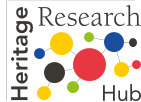Project facts
Presentation
Although much work has been done on conservation treatments of archaeological collections, there are few studies available in two critical situations involving the pre and post-treatment phases:
Archaeological organic artefacts are generally found in a waterlogged state which must be maintained until treatment as they cannot support air drying. One of the topics of this project deals with developing strategies that permit the storage of organic archaeological finds for a long duration (several months) in a waterlogged state, i.e under pre-treatment conditions, without compromising the scientific evidence they contain. Several methods of controlling storage conditions will be tested on real archaeological wooden and leather samples. Specific monitoring protocols for these wet artefacts will be adapted. The experimentations will be carried out by samples analysis of the organic materials before and after their storage period. Experiments are foreseen in a true archaeological excavation context (Biskupin site in Poland).
The second topic aims at setting up efficient and practical methods to assess the degradation over time of archaeological organic artefacts, i.e to assess their post-treatment conditions. Knowledge of the impact of environmental conditions and of conservation treatments will allow earlier identification of potential degradation, which in turn offers better protection of the objects and more cost-effective mitigation measures. The main objective is to establish an assessment protocol on treated and untreated archaeological materials, artificially or natural aged. These practical assessments methods, well suited for museums/storage facilities, will be validated by advanced analytical techniques to observe the reality of the degradation.
Impacts & Results
The project further intends to reinforce interdisciplinary approaches among archaeologists, conservators, and conservation scientists in order to improve the sustainability of protection practices. The expected results will involved field practices both for the stabilization of waterlogged artifacts for excavation/archaeometry situations and for degradation assessments in museums/storage facilities.
Banner: “Jones Mill 2008_1775” by Farther Along is licensed with CC BY 2.0.
